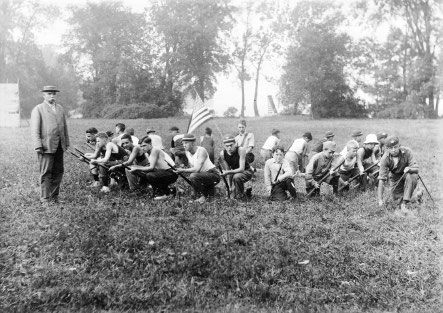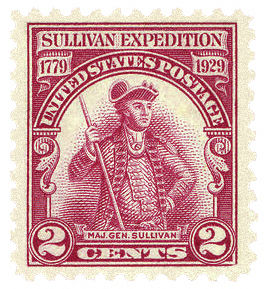From Trail to Rail and Back
- William Darron

- Oct 8, 2023
- 5 min read
Updated: Oct 9, 2023
No nearer approach to what may be called civilization, if the term may be applied to a people who left no record, other than the legendary lore transmitted from father to son, may be found than the Iroquoian Confederacy, whose form of government was maintained for a greater length of time than that of any republic which had previously or has since existed.

Their location, according to their claim, was upon the highest part of the Continent, from whence flowed the Mohawk, Hudson, Genesee, Delaware, Susquehanna, Ohio and the St. Lawrence rivers, going in all directions to the sea. The intersection of lakes and streams, separated only by short portages, the continuous valleys being divided by no mountain barriers, offered unequalled facilities for intercommunication. Their custom of settling on both sides of a river or encircling a lake made the tribal boundaries well defined.

One of the most interesting features of aboriginal geography was the location of their principal trails. If we travel either of the great railways extending through our State, we are upon one of the leading trails that Lewis H. Morgan stated were used in 1732. They followed the lines of the least resistance.

You have been reading the words of Colonel Samuel P. Moulthrop. He wrote an article entitled, "An Indian Civilization and its Destruction". It was published in 1906 for the magazine of the Proceedings of the New York State Historical Association. It's a great "fast read" of the history of settlers of Western New York and the Seneca Indians.
Colonel Moulthrop noted that the trails of the "Iroquoian Confederacy", as he called it, were converted to the lines of railroads that crossed New York State.

The Lehigh Valley Railroad that ran through Rush replaced native trails in September 1892 when the first trains started rolling.

The railroad survived until 1976, a mere 84 years. It is believed that the Iroquois may have flourished for over 300 years over the same route before they were slaughtered in 1779.

Of course, the railroad provided jobs and opportunity for many people in the area. Our economy of just over 80 years skipped leaps over what the Iroquois had done in over 300 years. Colonel Moulthrop's article continues:
Mary Jemison says that, "No people can live more happily than the Indians in times of peace." Their life was one round of simple sport and pleasure, in keeping with their free life; their simple wants were supplied with but little exertion. Following the chase gave them amusement and served to keep them in good physical condition, as well as to retain their skill with weapons that were their dependence in time of war.

The Lehigh Valley Railroad started to falter in 1959, just two years after the New York State Thruway for automobiles was completed.

Trains were no longer necessary like the Iroquois were no longer necessary. Our modern civilization is superior. It can obsolete an entire way of life in four generations. Native Americans were happy for over four times as long without totally abandoning their way of life for "something better". The Iroquois might be still inhabiting Western New York if it weren't for the American Revolution:

Date: May 31, 1779 Written by: Alexander Hamilton, Major General (Four Star) U.S. Army On behalf of: George Washington, Commander, U.S. Army To: John Sullivan, Major General (Four Star) U.S. Army Sir: The expedition you are appointed to command is to be directed against the hostile tribes of the Six Nations of Indians with their associates and adherents. The immediate object is their total destruction and devastation and the capture of as many persons of every age and sex as possible. It will be essential to ruin their crops, now on the ground, and prevent their planting more.

Then followed instructions more in detail, showing that Washington had acquired an almost accurate knowledge of the country not only, but the people as well. His instructions were carried out almost to the letter as far as the army proceeded. Sullivan concluded when he had driven them from the valley of the Genesee that his mission was fulfilled. Sensitiveness that is unreasoning may have been shocked at Washington's policy, carried out by Sullivan. The destruction of forty villages, some of them extensive, as reported by Sullivan, sixty thousand bushels of corn, three thousand bushels of beans - in one orchard fifteen hundred peach trees - seemed harsh treatment, but then we consider that a major portion of this would have furnished the Tories with sustenance, another view must be taken.
Colonel Moulthrop escapes being accused of being "woke" in 1906 by saying, "If the U.S. Army didn't wipe out the Iroquois, the British would have, thus acquiring their food supply, thus giving the British an advantage in the Revolutionary War."
I get it. We are Americans that split from England. We killed lots of people to do it. I've got a distant relative buried in Rush Pine Hill Cemetery that extolled his service for Sullivan with great distinction upon his tombstone. I am willing to bet that other U.S. veterans of other wars will do the same. But will they understand the "glory" in their service within their lifetimes?

Our American way of life evolved by taking the lands of the Senecas. We resorted to the same tactics in 1779 that today we condemn of others. In 1906 Colonel Moulthrop was more introspective about the Senecas than other people of the time. Since he wasn't a "viral media star" his article didn't upset people the way it would if he wrote it today:
The red man was always free from political bondage, He was convinced that man was born free; that no person had any right to deprive him of that liberty. Undoubtedly the reason for this was the absence from the Indian a mind of a desire for gain - that great passion of the white man - 'His blessing and his curse in its use and abuse'
It never hurts to reference the bible when looking for absolution:
But to those of you who will listen, I say: Love your enemies, do good to those who hate you, bless those who curse you, pray for those who mistreat you. Luke 6:28-29

“Colonel” Samuel Parker Moulthrop was born in 1848. Moulthrop originally lived in Wisconsin, where the Menominee and Fox Indians still dwelt. He attempted to enlist in the army during the Civil War, but men of import discovered the fourteen-year-old in their midst and whisked him back home.
He eventually became a teacher, and later a school principal, at several Rochester-area schools, although mainly No. 26 School. In the early twentieth century, he invented an adjustable desk to better accommodate adult evening classes; these desks were soon in demand nationwide. In 1896, his “repute as an inspiring leader" prompted Commander Charles Wood of the Veteran’s Union to name him with the honorary title of "Colonel.” He started with the YMCA in that same year, when he headed up the junior camp on Conesus Lake. He became known as the "Camp Commandant" of the YMCA Camp Cory.
In 1910, Moulthrop helped form the first Rochester-area Boy Scout troop. It seems that throughout his teaching career, Moulthrop was obsessed with
calisthenics and military maneuvers. Old photos are replete with images of Moulthrop commanding campers in military formation. Colonel Moulthrop organized the horse battalion for the 1892 Memorial Day parade in Rochester, where President Benjamin Harrison was the guest of honor.

Colonel Moulthrop eventually retired in 1929, when he was eighty-one. He passed away in 1932. Though his duties as a school principal in Rochester had kept him busy, Colonel Moulthrop was a common sight at camp Cory for some years after its permanent move to Keuka Lake.
And what became of the Indian trails that were the Lehigh Valley Railroad? They are back to being trails again.





Comments